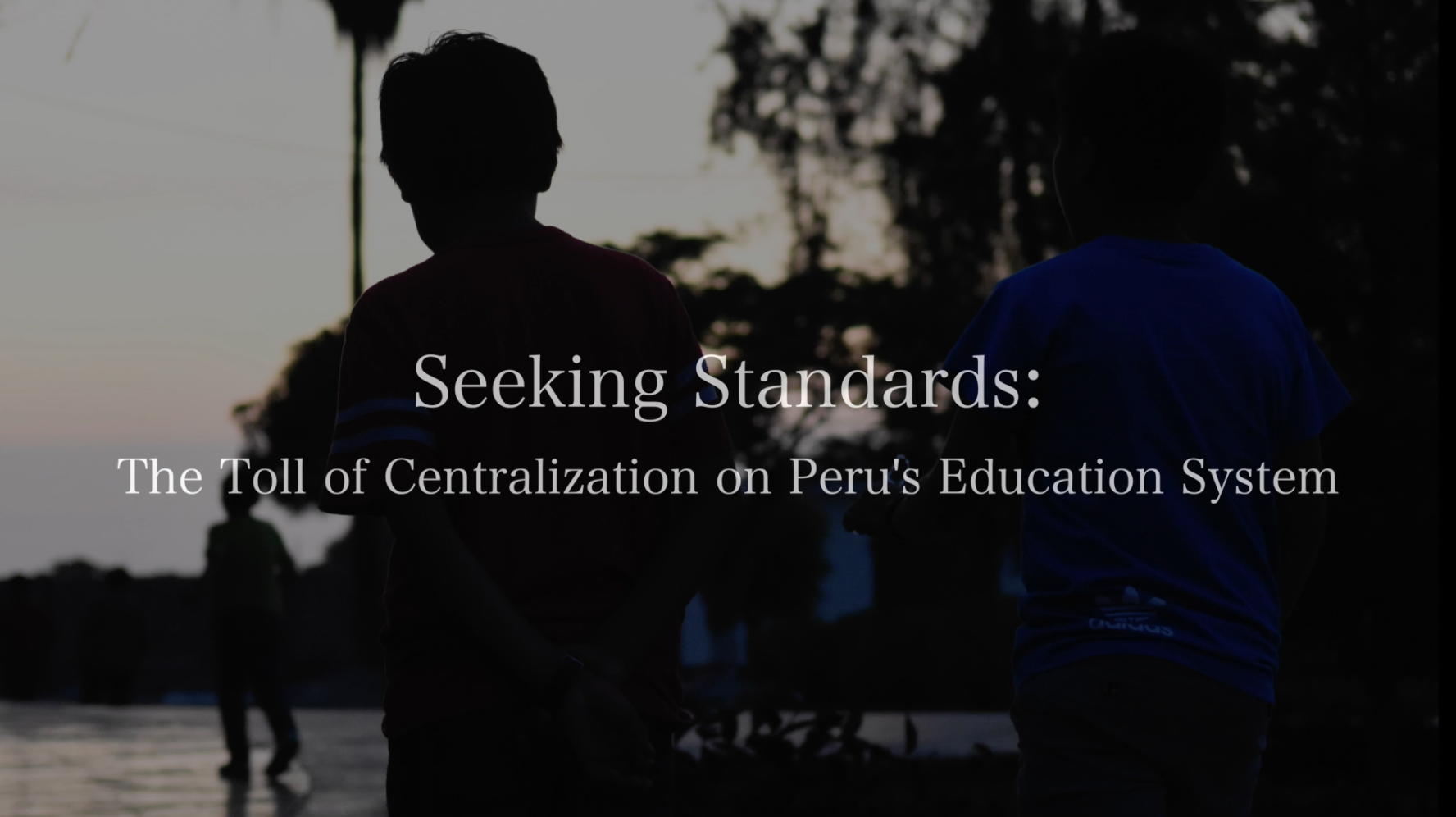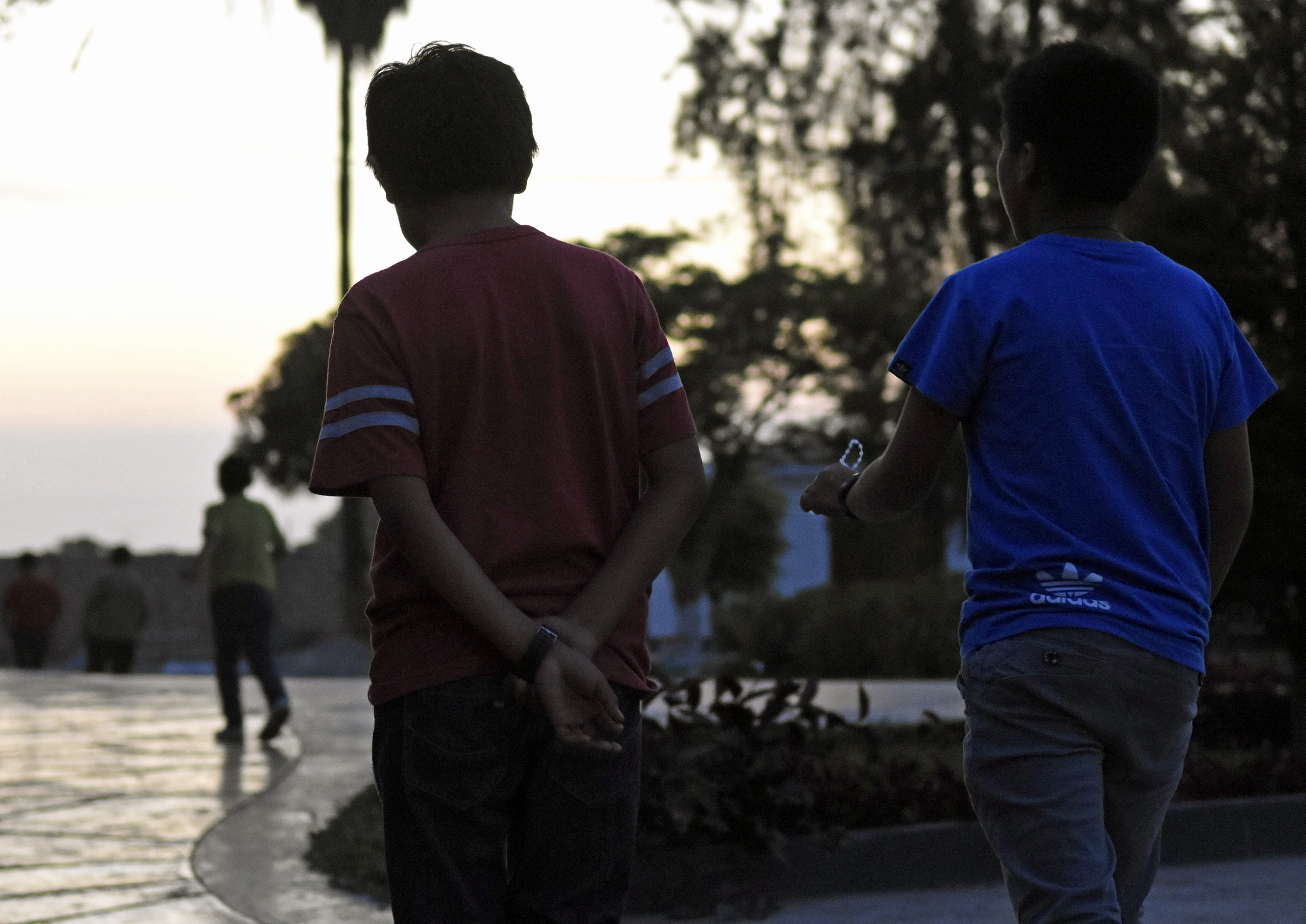
Heynen Florez, 19, works the night shift at El Hornero, a small restaurant in Quilmaná, a district about two hours from the glittering skyscrapers and Starbucks-speckled corners of Peru's metropolitan capital city.
Florez, who recently completed her secondary education, moves between a small dining area and the even smaller kitchen—clearing leftover fried chicken and cold fries off dirty plates before returning to her two customers.
Right outside the restaurant's open door, three men repair the dusty road. Every so often, a dog with dirty, unkempt fur roams past.
This setting provides a stark contrast between the wealth in Lima and the struggles of the rest of the country, where 30 percent of the population lives in poverty.
This rate only increases in rural areas, where more than 55 percent of Peruvians live below the poverty line.
And with greater poverty come lower levels of education.
"The standardization of education [in Peru] is impossible due to our geography and cultural context," said Carolina Vidal, rural education networks coordinator at the Ministry of Education.
For this reason the Ministry of Education is beginning to consider unconventional school models in certain rural areas to narrow the gap between the urban and rural areas, Vidal said.
For example, to adapt the education system to children who need to help financially support their families, boarding schools are being considered where students would alternate between 15 days of school and 15 days of work.
Florez, who lives with three of her nine siblings, works eight hours a day, six days a week to support her family. She hopes to use what money is left to attend a university this year.
She and her siblings do not receive financial support from her parents, who live in Ayacucho, where Florez said she had to walk for more than an hour to get to school.
In rural Peru, it is common for children to move away from their parents to find better work and education opportunities in larger cities.
"It's difficult and sad," Florez said of being six hours by car from her home.
Even though her parents let her continue her studies, some children in her hometown study long enough to learn how to read and write, before their parents pull them out of school to work on farms instead of continuing their education.
This is not uncommon in a country where 34 percent of children ages 5 to 14—about 2.5 million children—are involved with child labor.
"If you go to parents in rural communities and tell them to choose between education and work, they will choose work because it's for their family economy," Vidal said.
This is just one of many barriers facing students outside of the city, in a country where an education standard has yet to be accomplished.
"We teach the children, but it's not at a level for them to be able to go to the university—it's only the basics," said Jose Louis Luyo, a teacher at a secondary school in Cañete, a province about two hours from the capital.
Many students aren't challenged, but rather made to conform to mediocrity, Luyo said.
When parents realize their children aren't being taught enough to later succeed at the university level, they often pull them out of school, Luyo said. Other students miss class and exams because they work.
"In reality, we need to see that the state is asking itself what it's doing with education because instead of helping, it's damaging," Luyo said.
In rural regions, primary school multi-grade classrooms are common, said Santiago Cuento, senior education researcher at Group for Analysis and Development in Lima.
Because of a shortage of teachers, the government has to provide only one teacher for every 20 students, Cuento said, leaving only one or two teachers to teach every grade in some rural schools. The result of this efficient set-up is usually poorer test results, he said.
"In rural areas, the main barrier [to education] is access and in urban areas it is security," Vidal said. "Due to this, there is no continuous presence of the government."
Finding teachers for these rural schools is another complication of its own.
Convincing a good teacher—most likely from the city—to uproot and move to a rural area can be difficult, Cuento said.
Half a century ago, when education was primarily just an option for the elite, teachers were paid much more, he said.
Once public education was implemented, teachers' salaries and the quality of education in general decreased because the education budget did not increase proportionately, Cuento said.
Still, he said the government is beginning to put more emphasis on the importance of quality teachers, but those teachers need to be more attracted to the idea of working in a rural area.
The government is working to incorporate a bonus for teachers who work in rural areas, but an attractive bonus is not possible right now, said Yuri Cavero, a government official at the Ministry.
Lisette Campos, a math teacher at a secondary school in Cañete, has already been moved to multiple schools since she began teaching six years ago.
She said has seen the struggles many of her students go through outside of school—whether it be violent upbringings, child labor or teenage pregnancy.
"A lot of my students come from dysfunctional families," Campos said. "Parents who are separated, parents who don't pay enough attention to their children."
Campos said she believes as a teacher she is obligated to not only teach her students numbers, but also the values and morals they might not learn at home where their parents likely received little education.
"It's the responsibility of the country, of the state—specifically the government—to try to see that every child should have access to quality education because it is their right," Cuento said. "We're far from that goal, but we shouldn't lose sight."





